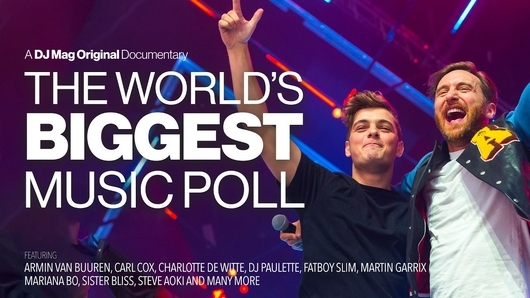
Bass, beats and Bollywood — these are the three ingredients that have seen DJ Chetas become India’s No.1 Bollywood DJ. Last year, the Mumbai native made history by becoming the first Indian DJ to break into DJ Mag’s Top 100 DJs and, in turn, put India back on the dance music map.
DJ Chetas’ meteoric rise has been so impressive because he’s done it on his own terms. The secret to DJ Chetas’ success is his ability to incorporate Bollywood vocals into his music with a never-ending supply of mash-ups. His unique style has connected 600,000,000 young Indians with the energy and excitement that the dance music world can offer. And whilst Europe’s dance scene is built upon the underground, India’s burgeoning scene is the opposite — it’s all about the visual drama; the entertainers, the musicians and, of course, DJ Chetas.
Dance music in India is nothing new, of course. Goa has a rich, storied history when it comes to dance music. But for many upwardly mobile Indians, it was very much the preserve of free-spirited Goans and tourists looking to soak up some of the beach-side magic that swept across the region in the 1990s, and not geared towards your average Bollywood-loving Indian. And that’s where DJ Chetas has made his mark — he brought dance music to Bollywood, and started a cultural revolution.
For any scene to grow and become sustainable it has to create its own stars — and that’s exactly what DJ Chetas represents; he’s a product of India’s cultural changes, and will no doubt be an inspiration for the next generation of Indian DJs to make their mark. With a population of over 1 billion, India represents a hitherto largely untapped market that now demands both the biggest names in the business and its own compelling homegrown talent, and DJ Chetas is certainly compelling. ANDREW RAFTER
What have been the new frontiers for you this year?
“Music composition for Bollywood movies and introducing EDM to a wider and more commercial India. Step two will be getting international artists to collaborate on Bollywood projects!”
Is electronic music taken seriously enough as an art-form?
“In Europe maybe, back in India, not so much.”
What’s the best new bit of DJ/production technology, and why?
“Absolutely digging the NXS 2!”
If you had to switch your style to another genre, what would it be?
“I'm multi-genre already! Back here in India, I can do a tropical mix, a future bass mix, a reggae mix or whatever I want and it'll still be called Bollywood since it'll have a commercial topline on it. This gives me the leeway to try different styles and giving the fans something new all the time.”
As a fan, what is the top price you would pay to see yourself DJ?
“Whatever it takes! My shows are more than just a 90-minute set, it’s an entire act which has been choreographed with top production and entertainment!”
What can be done to prevent drug-related deaths at dance music events?
“Tighter security, little more discipline.”
How can we increase diversity in dance music?
“Producers and labels need to be more open-minded. People have been rejecting Indian folk vocals to release for the longest time. Suddenly KSHMR comes and changes the game altogether, and he got the support he needed to push his roots. There are regional DJs like me in all countries. Instead of treating us like infiltrators entering your scene, check out our stuff and you'll be shocked at the musicality we can showcase!”
